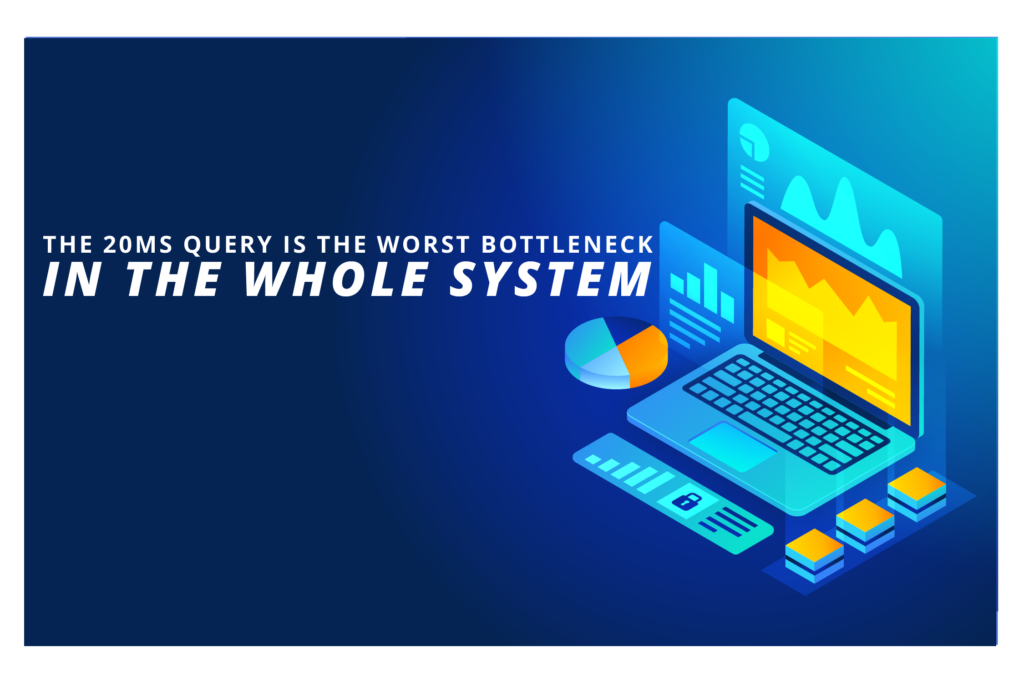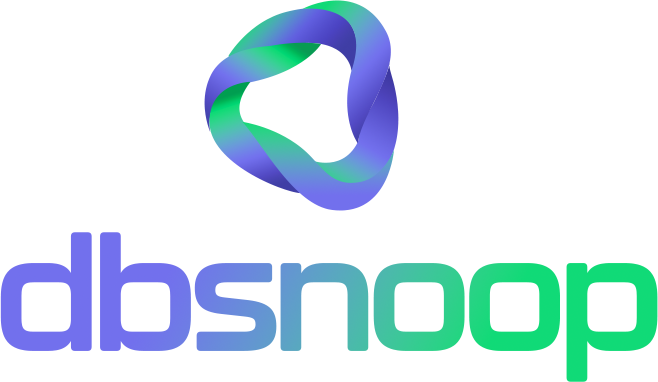

The hunt for slow queries, a time-honored practice in database performance optimization, is a trap. Engineers and DBAs are trained to look for executions that take seconds, as they are the obvious offenders, the easy targets that appear in all reports. However, the most expensive and destructive bottleneck in high-transaction systems is rarely the query that takes 2 seconds to run. It is the query that executes in 20 milliseconds but is called 5,000 times per minute.
This pattern, often introduced by ORMs (Object-Relational Mappers) in microservices architectures, creates an insidious type of bottleneck, a “death by a thousand cuts” that continuously overloads the system.
The real cost of performance is not the latency of a single execution; it is the total workload, a direct function of latency * frequency. Standard tools, like the “slow query log,” are structurally blind to this pattern. They operate based on a latency threshold that these fast queries never cross. The result is a system that constantly operates under high CPU load without an apparent cause, leading SREs into a vicious cycle of vertical hardware scaling.
The team sees the symptom, resource saturation, and reacts by scaling up the instance, increasing the cloud bill, without ever diagnosing the true disease. Below, we detail technically how to identify and optimize this workload pattern, the most expensive bottleneck that your current monitoring does not see.
The Fallacy of the “Slow Query Log”: Why Your Main Tool Fails
The main reactive tool for performance analysis in most databases is the slow query log. Its logic is rudimentary: the administrator configures a time threshold (e.g., long_query_time = 1 in MySQL, log_min_duration_statement = 1000 in PostgreSQL), and any query whose execution exceeds this value is recorded in a log file. In theory, it seems like a logical approach. In practice, it creates a massive blind spot that hides the most common performance problems in modern applications.
The Threshold Bias
The fundamental problem is the threshold bias. A query that executes in 999 milliseconds, even if it is the most inefficient in the system and is called tens of thousands of times per hour, is considered “performant” by this tool. It perpetually operates under the radar, invisible. This mechanism generates a false sense of security.
The engineering team checks the log, finds nothing, and concludes that the problem is not in the database, but in the application, the network, or the infrastructure. The investigation is diverted down the wrong path, while the real culprit continues to consume resources silently.
Consider an e-commerce application. A query that fetches the inventory of a specific product can be optimized to run in 30ms. However, if this query is called for every item on a category page with 50 products, and that page is visited 2,000 times per minute, we have 100,000 executions per minute. Even though it is individually fast, its aggregate impact is colossal. The slow query log will never record it.
It was designed for an era of monolithic applications with heavy, low-frequency queries, not for the world of “chatty” microservices that execute thousands of small, fast operations per second.
APM (Application Performance Management) tools can sometimes capture the transaction latency in the application, but they often use sampling to manage the volume of data, which means they may not capture all executions, underestimating the real impact of the frequency. The only way to diagnose this problem is to analyze 100% of the workload directly in the database.
The Metric That Matters: Total Cost (Accumulated Workload)
To diagnose correctly, we need to abandon latency as our primary metric and adopt the total workload. The most accurate metric for this is “DB Time” (or “Active Session Time”). It represents the accumulated time that database sessions have spent active, either executing on the CPU or in wait events (like disk I/O). Essentially, if a database has 4 vCPUs, its maximum sustainable DB Time is 4 seconds per second of real time. If the DB Time exceeds the CPU capacity, queries start to queue up, and the latency perceived by the user skyrockets.
The calculation of a query’s impact on DB Time is straightforward:
Total Query Cost (DB Time) = Average Execution Latency * Execution Frequency
Let’s expand our scenario to illustrate the point more clearly:
- Query A (The Slow Report): A complex analytical query.
- Average Latency: 3 seconds (3000ms)
- Frequency: 5 times per minute
- Total Cost: 3s * 5 = 15 seconds of DB Time per minute.
- Query B (The Moderate Search): A query that fetches a customer’s order history.
- Average Latency: 300 milliseconds (0.3s)
- Frequency: 100 times per minute
- Total Cost: 0.3s * 100 = 30 seconds of DB Time per minute.
- Query C (The Quick Check): A query that validates a user’s session token.
- Average Latency: 20 milliseconds (0.02s)
- Frequency: 5,000 times per minute
- Total Cost: 0.02s * 5000 = 100 seconds of DB Time per minute.
Analysis of the Result
Query A is the obvious target for the slow query log. It is 150 times slower than Query C. However, its real impact on the system (15s of DB Time) is almost 7 times smaller. Query C, which is so fast it seems harmless, is the one actually consuming most of the database’s capacity. It alone requires 1.66 seconds of CPU time every second (100s / 60s), which means it can saturate almost two entire vCPUs.
The most impactful optimization is not to reduce Query A from 3s to 1.5s (a saving of 7.5s of DB Time), but to optimize Query C from 20ms to 10ms. This seemingly trivial micro-optimization would save 0.01s * 5000 = 50 seconds of DB Time per minute, freeing up an entire vCPU and having a transformative impact on the system’s performance and scalability.
This constant load also has side effects. High-frequency queries cause a constant “churn” in the buffer cache (the RAM that the database uses to store frequently accessed data). Even if the query is fast, the high volume of executions can force important data from other queries out of the cache, resulting in more “physical reads” (slow disk reads) for the system as a whole.

How dbsnOOp Diagnoses “Death by a Thousand Cuts”
dbsnOOp’s approach was designed specifically to overcome the limitations of the slow query log and focus on the total workload. The platform operates based on a continuous, non-sampling analysis of the database’s activity.
Ranking by Accumulated Cost (DB Time): The main dbsnOOp dashboard does not rank queries by their individual latency. The default metric is “DB Time” (or its equivalent, depending on the database). In this ranking, our 20ms Query C would appear at the top of the list, marked in red as the system’s main resource consumer. Query A, the slowest, would be much further down. This simple change of perspective immediately directs the engineer’s attention to the real problem.
Multi-dimensional Analysis: The platform allows the team to analyze the workload in multiple ways. It is possible to sort queries by Executions per Second to immediately identify the most frequent ones. One can sort by Logical Reads to see which queries are processing the most data in memory, or by CPU Time to see which ones impact the processor the most. This flexibility allows an engineer to see the full story, understanding the relationship between frequency, latency, and resource consumption.
Execution Plan Analysis for Micro-Optimization: Once the high-impact query is identified, dbsnOOp provides the tools for micro-optimization. For our Query C, the goal is to reduce the 20ms. The execution plan analysis might reveal that, although the query uses an index, it still needs to perform an additional read on the main table to fetch columns that are not in the index.
- Solution: Covering Index. dbsnOOp can recommend the creation of a “covering index.” This is a technique where all the columns needed to satisfy the query (those in the SELECT, WHERE, ORDER BY) are included in the index itself.
- Practical Example: If the query is SELECT user_id, user_role FROM sessions WHERE session_token = ?; and the current index is only on (session_token), the database uses the index to find the row and then accesses the main table to fetch user_role.
- dbsnOOp Recommendation: The platform would suggest an index like CREATE INDEX idx_sessions_token_covering ON sessions(session_token) INCLUDE (user_id, user_role);. With this new index, the database gets all the information it needs directly from the index structure, without ever touching the table. This optimization can easily reduce the latency from 20ms to 5ms, generating massive savings in the total workload.
Historical Visibility: dbsnOOp stores historical performance data, allowing the team to see when a query became a problem. A developer can see that Query C, after a deployment on Tuesday, increased its frequency from 1,000 to 5,000 executions per minute. This provides direct feedback on the impact of a code change, connecting the cause (the deployment) to the effect (the increased workload), a fundamental pillar for a mature DevOps culture.
The Financial Impact of Workload Optimization
Optimizing high-frequency queries has a direct, measurable, and recurring impact on cloud infrastructure costs. The constant load generated by these queries is what justifies the need for larger database instances.
Let’s create a realistic financial scenario. Suppose Query C is forcing the use of an AWS RDS instance db.m6g.4xlarge (16 vCPUs, 64 GiB RAM), which costs approximately $1,200/month (On-Demand). The average CPU utilization is at 75%, with Query C being responsible for 60% of this load.
By optimizing Query C from 20ms to 10ms, we reduce its cost by half. The total workload on the database drops by 30% (half of the 60% it represented). The average CPU utilization now drops to about 45% (75% – 30%). With this new baseline, the instance is overprovisioned. The team can safely rightsize to a db.m6g.2xlarge instance (8 vCPUs, 32 GiB RAM), which costs approximately $600/month.
The micro-optimization of a single 20ms query resulted in a direct and recurring saving of $600/month, or $7,200 per year, for a single database. In a company with dozens or hundreds of databases, this saving scales to hundreds of thousands of dollars. Furthermore, the freed-up capacity postpones the need for complex and expensive engineering projects, such as sharding or migrating to a different database, freeing up engineers to focus on delivering customer value.
Shift the Focus from Latency to Workload
Effective performance optimization in modern systems requires a fundamental paradigm shift: stop hunting exclusively for slow queries and start analyzing the total workload. The most expensive, persistent, and misleading bottlenecks are often the fast queries that, due to their overwhelming frequency, consume the majority of your system’s capacity. Ignoring them is like trying to empty a bathtub with a bucket while the tap is fully open.
Identifying and applying micro-optimizations to these high-frequency offenders is the highest ROI strategy to improve performance, increase scalability, and drastically reduce cloud costs.
Want to discover which millisecond query is secretly overloading your system? Schedule a meeting with our specialist or watch a live demo!
To schedule a conversation with one of our specialists, visit our website. If you prefer to see the tool in action, watch a free demo. Stay up to date with our tips and news by following our YouTube channel and our LinkedIn page.
Schedule a demo here.
Learn more about dbsnOOp!
Learn about database monitoring with advanced tools here.
Visit our YouTube channel to learn about the platform and watch tutorials.

Recommended Reading
- Performance Tuning: how to increase speed without spending more on hardware: Before provisioning more expensive cloud instances, it’s crucial to exhaust optimizations at the software level. This article covers performance tuning techniques that allow you to extract the maximum performance from your current environment, focusing on query and index optimization to solve the root cause of slowness, rather than just remedying the symptoms with more hardware resources.
- The Health Check that reveals hidden bottlenecks in your environment in 1 day: Understand the value of a quick and deep diagnosis in your data environment. This post details how a concentrated analysis, or Health Check, can identify chronic performance problems, suboptimal configurations, and security risks that go unnoticed by daily monitoring, providing a clear action plan for optimization.
- How dbsnOOp ensures your business never stops: This article explores the concept of business continuity from the perspective of proactive observability. Learn how predictive anomaly detection and root cause analysis allow engineering teams to prevent performance incidents before they impact the operation, ensuring the high availability of critical systems.

